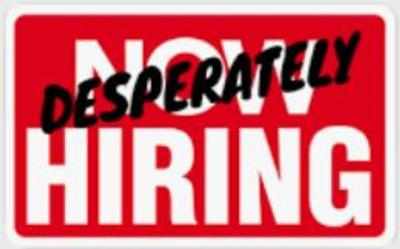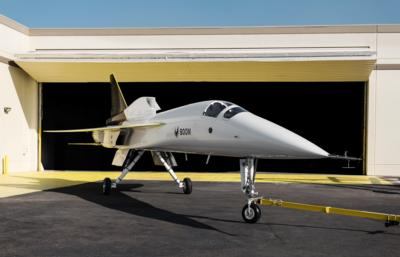Wed, May 18, 2022
Workforce Shortages Continue To Ripple Through Air Industry
The long-lamented pilot shortage, further exacerbated by the arrival of COVID-19 and the measures airlines took to reduce operating expenses by jettisoning personnel through early retirement and furloughs appears to be knocking hard at the other side of the cabin door.

However, the ecosystem of (mostly smaller) manufacturer, maintenance, technical, and support staff are also feeling the pinch, and as recently as last week, their representatives have been trying to get the attention of congress to address “providing more training opportunities, such as apprenticeships through community colleges”, in addition to more government investing in STEM education, reskilling current employees, enhancing training efforts by expanding the talent pool, and increasing diversity, equity, and inclusion in the aerospace and defense workforce.
Mr. Eric Fanning, President and CEO of Aerospace Industries Association (AIA), an advocacy group representing over 300 aerospace and defense entities, highlighted their member-Certified Aviation Services (CAS) program with San Bernardino Valley College in California and the BAE Systems-MyTurn partnership as two examples of successful programs geared towards addressing staffing shortage. Mr Fanning further stated that a reform of the Federal Work Study Program may be helpful in reaching the disadvantaged and underserved.

Boom Supersonic CEO Blake Scholl reiterated that “a critical lesson the company leaned through the pandemic is the importance of domestic manufacturing and its supply chain”. Others called for additional federal funding for technical education and community college programs to help replenish the workforce pipeline for small companies. However, investments often typically go where significant growth is expected, hence the small mom and pops are likely to fall through the cracks while the imbalance continues to support the larger entities, and we have not even begun to address the ‘minimum wage’ while trying to remain competitive. For too many years, corporations have sought cheaper labor/materials overseas to reap large profits and now find themselves in a situation entirely of their making, and the common refrain is for government to come to the rescue? Why not have the industryy fix the problem it created? This debate/discussion is still in first gear.
More News
Circle To Runway (Runway Number) Used by ATC to inform the pilot that he/she must circle to land because the runway in use is other than the runway aligned with the instrument appr>[...]
Aero Linx: National Aviation Safety Foundation (NASF) The National Aviation Safety Foundation is a support group whose objective is to enhance aviation safety through educational p>[...]
At Altitude Of About 250-300 Ft Agl, The Airplane Experienced A Total Loss Of Engine Power On November 6, 2024, at 1600 central standard time, a De Havilland DHC-1, N420TD, was inv>[...]
From 2009 (YouTube Edition): Three Hour Flight Was 'Flawless' -- At Least, Until Mother Nature Intervened For anyone who loves the aviation business, this was a VERY good day. Afte>[...]
Also: AMA Names Tyler Dobbs, More Falcon 9 Ops, Firefly Launch Unsuccessful, Autonomous F-16s The Air Force has begun ground testing a future uncrewed jet design in a milestone tow>[...]
 ANN's Daily Aero-Term (05.05.25): Circle To Runway (Runway Number)
ANN's Daily Aero-Term (05.05.25): Circle To Runway (Runway Number) ANN's Daily Aero-Linx (05.05.25)
ANN's Daily Aero-Linx (05.05.25) NTSB Prelim: De Havilland DHC-1
NTSB Prelim: De Havilland DHC-1 Classic Aero-TV: The Boeing Dreamliner -- Historic First Flight Coverage
Classic Aero-TV: The Boeing Dreamliner -- Historic First Flight Coverage Airborne-NextGen 05.06.25: AF Uncrewed Fighters, Drones v Planes, Joby Crew Test
Airborne-NextGen 05.06.25: AF Uncrewed Fighters, Drones v Planes, Joby Crew Test




